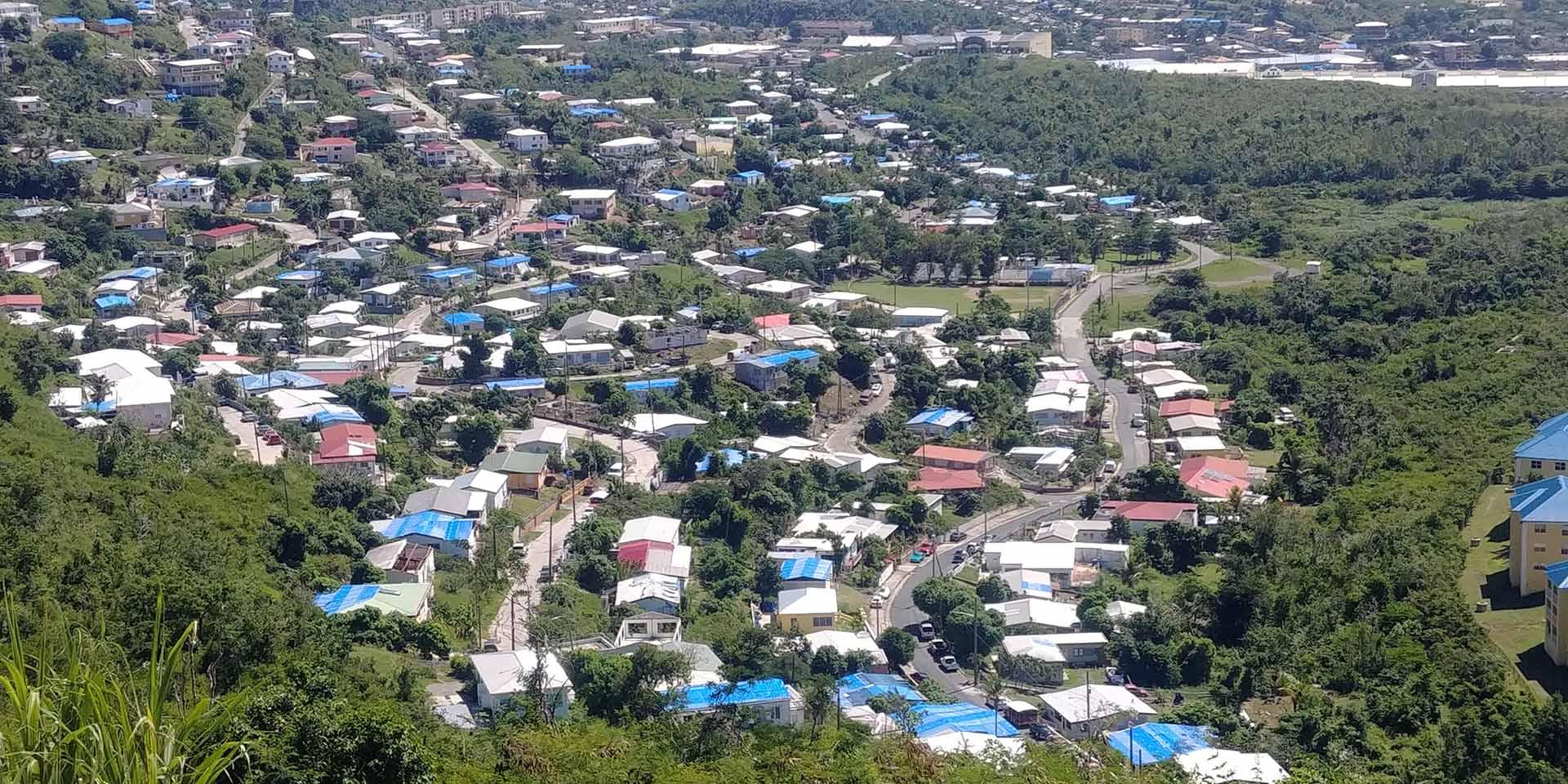
Weathering future storms through equitable resilience
As a trusted partner in resilience, our work in the U.S. Virgin Islands (USVI) demonstrates how resilient building promotes equity and enables island communities to better withstand the next storm.
The aftermath of back-to-back 2017 Category 5 Hurricanes Irma and Maria on the U.S. Virgin Islands (USVI) was devastating — 52 percent of the USVI’s housing stock was damaged, and tens of thousands of people who survived the storms were displaced. The USVI government and the Federal Emergency Management Agency (FEMA) agreed on stabilization repairs to make storm-damaged homes safe and habitable.
As a partner in recovery, AECOM completed more than 6,500 stabilization repairs that enabled one-quarter of the USVI population to return home and re-establish neighborhood-based connections.
However, stabilization repairs do not provide long-term safety for these remote island residents who have no way to evacuate from future storms. To address this, FEMA and the USVI agreed to fund and deliver a code-compliant roof repair program — a program built on FEMA and AECOM best practices gleaned from rebuilding after Hurricane Marilyn in 1995, as well as the work we do today to address the climate crisis.
Maintaining community through equitable resilience
The USVI is experiencing increased natural hazard risks due to climate change, with hurricanes becoming more frequent and more dangerous. In 2017, back-to-back hurricanes Irma and Maria were among the most powerful on record. The hurricanes caused catastrophic damage to critical infrastructure, including more than half of the homes in USVI, and disproportionately impacted low-income residents.
As the USVI’s partner, AECOM was on the ground after the storms to deliver the FEMA-funded Emergency Home Repairs Virgin Islands (EHRVI) Program. Stabilization repairs to 6,513 homes enabled one-quarter of the USVI population to return to their homes and neighborhoods. While urgent and important, these repairs did not provide safety for residents from future storms.
In 2018, the USVI adopted new International Building Codes that would allow roofs to withstand 165 mile-per-hour wind speeds — equivalent to a Category 5 hurricane — the same as the storms that had damaged homes on the islands the previous year. FEMA accepted the USVI proposal to make code-compliant permanent repairs to damaged roofs in the EHRVI program.
Our team designed and initially permitted 3,500 roofs, and within a remarkable six-month timespan, FEMA allowed over 1,516 roofs to be repaired and rebuilt by AECOM and another firm. The intent is for code-upgraded roofs to provide thousands of USVI residents with the ability to safely shelter in their own homes while promoting equity by decreasing storm displacement.
Building codes protect against displacement
EHRVI roof repairs used the updated Construction Information for a Stronger Home (CISH) standard so roofs would be resilient enough to withstand future storms and enable people to shelter at home. As part of our work, the team researched best practices and examined why some homes avoided damage from the storms’ punishing winds.
It was found that many of the roofs that did not sustain structural damage had been replaced after Hurricane Marilyn in 1995. Irma and Maria demonstrated the effectiveness of a 1996 building design standard that AECOM supported as part of FEMA’s Hazard Mitigation Technical Assistance (HMTAP) program.
More than 20 years later, FEMA’s Mitigation Assessment Team found that although Hurricanes Irma and Maria were more severe than Marilyn, buildings that were repaired or constructed under the 1996 design standard showed "no structural damage was observed in homes with the new (1996) roof design.”
The 2018 Stronger Homes Guide approved by FEMA and used as the design standard for EHRVI Program represented the next-generation residential building standard update. The Housing Finance Authority in the USVI continues to make code-compliance roof repairs today, increasing the number of residents who can safely shelter at home.
Why it matters
The EHRVI Program has proven to be an important force in avoiding catastrophic losses and adverse social impacts through code-compliant roof repairs. Initially, the program stabilized 6,500 homes and realized roughly $1.5 billion in savings to taxpayers compared to other long-term emergency sheltering programs.
But the real success of the program is measured not just by hardening roofs and preventing damage but by restoring homeowners’ sense of security and community. The program allowed residents to return to their homes, restoring familial structures that are often multi-generational in the USVI. Repopulating neighborhoods has broad benefits, such as reactivating social networks and reducing the risks of vandalism and unauthorized tenancy.
The program built on the USVI’s legacy of resilience and is a model for communities worldwide. As climate disasters become more frequent and severe, our work continues to evolve. AECOM, in its Compass Joint Venture, recently supported FEMA on the Wind Retrofit Guide for Residential Buildings (P-804) released in May 2023, which provides guidance on cost-effective wind retrofit projects for existing one- and two-family dwellings in hurricane regions across the United States, including USVI.
The importance of climate adaptation
The efforts undertaken by AECOM in the USVI after the 2017 consecutive hurricanes serves as a testament to the efficacy of collaboration between a U.S. territorial government and a federal agency and the clear benefits of resilient infrastructure.
Through close cooperation, AECOM, the USVI and FEMA leveraged their respective resources, expertise and knowledge to stabilize homes and safeguard property values. Moreover, this program enables residents to remain in their homes during future storms and also addresses climate adaptation challenges.